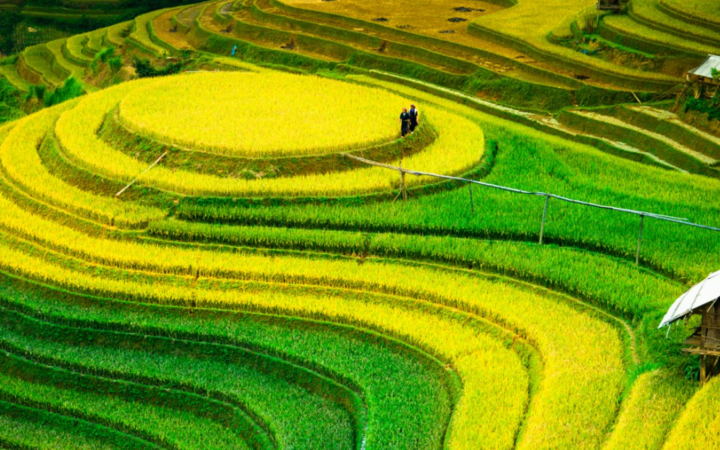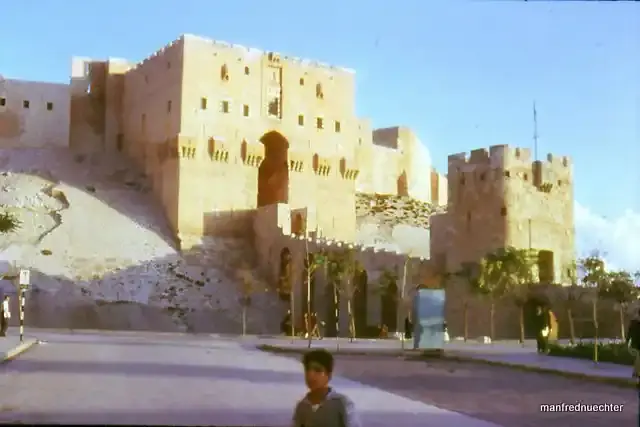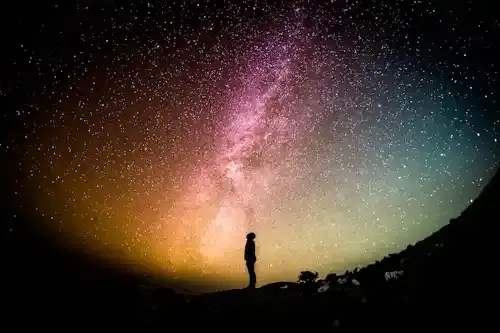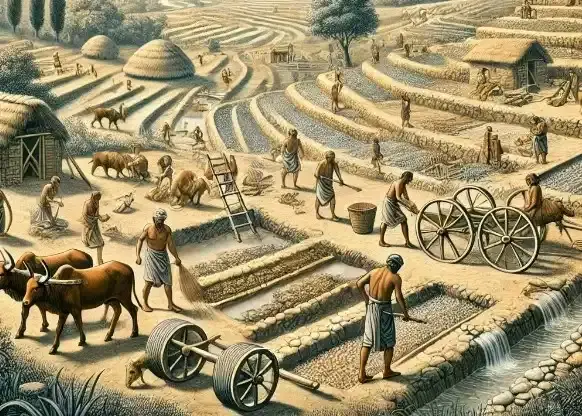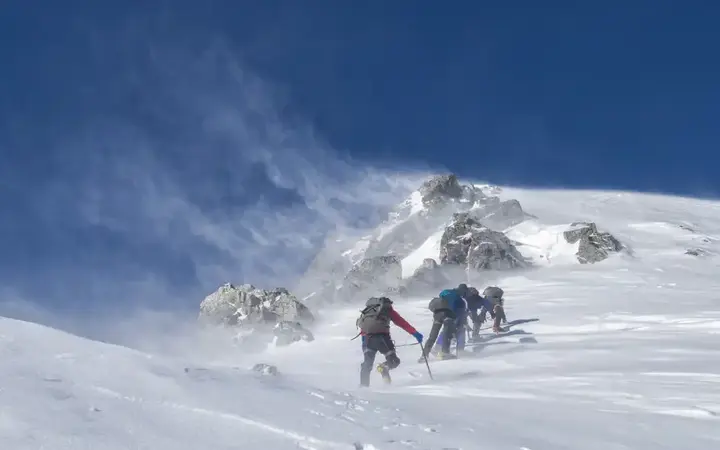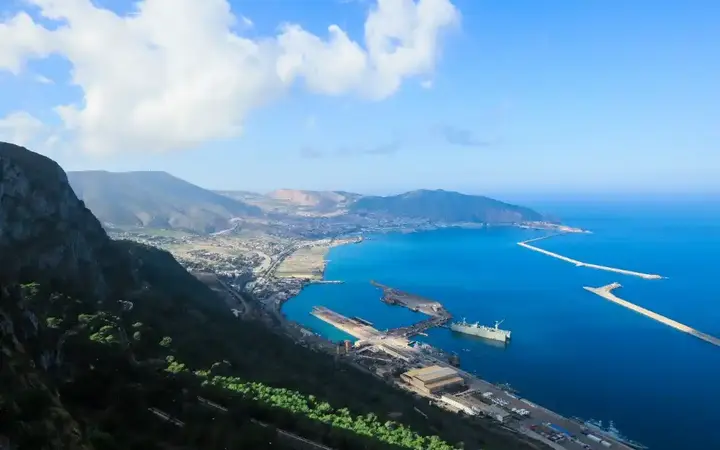The epic story of the Valley of the Kings in Luxor
On the west bank of the mighty Nile River, under millions of tons of fine sand, lies a vast city stretching in the form of tunnels for several miles in the desert of Egypt, it is the Valley of the Kings, where the greatest pharaohs in the history of Egypt were buried, and the vaults hide the tombs of the royal dynasties and dynasties of the ancient kings of Egypt, where the bodies of the most famous names in Egyptian history are found here, the pharaoh Seti the Great I, and the boy King Tutankhamun himself surrounded by priceless treasures in his long-forgotten tomb. The Valley of the Kings is definitely the greatest burial site in the world as it contains more than 62 royal tombs.
Show key points
- The Valley of the Kings, located on the west bank of the Nile, served as the burial site for many pharaohs of Egypt's New Kingdom between 1539–1075 BC.
- These tombs were intricately designed with hidden tunnels and chambers to protect the royal burials from grave robbers.
- Despite the elaborate defenses, most of the tombs, including that of Ramses II, were looted within centuries of their construction.
- ADVERTISEMENT
- The switch from pyramid construction to hidden tombs in the Valley was likely due to security concerns and evolving religious beliefs about the afterlife.
- The most famous discovery in the Valley is King Tutankhamun’s tomb (KV62), found by Howard Carter in 1922, still rich with treasures.
- Tombs in the Valley often reflected the Pharaohs’ belief in an underworld journey, incorporating complex, symbolic visual narratives.
- The Valley of the Queens, located nearby, houses the tombs of royal wives and children, though only a few are open to visitors today.
Recommend
Engineering attempts to mislead tomb invaders in the Valley of the Kings

Centuries-old engineers and architects have created intricate, puzzling structures hidden from view for thousands of years, and today, the secrets of these ancient engineers are revealed using the latest breakthrough rays in modern technology science. One of the things that everyone would like to know is the number of rooms there are How was the tomb designed in the end, why did you set out in all these different directions that break every known rule of tomb design??
A Brief History of the Valley of the Kings
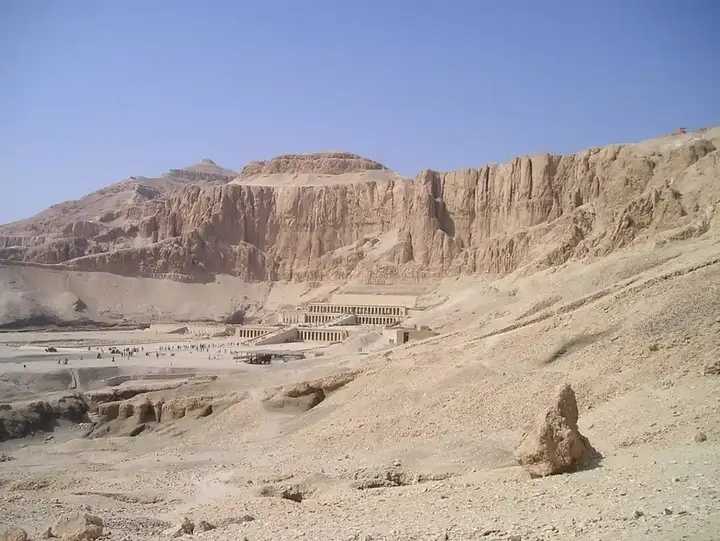
Valley of the Kings is the tomb of the pharaohs in the New Kingdom, which ruled around 1500 BC. to 1100 BC. The valley is known to the ancient Egyptians as the "Great and Galilee Tomb", surrounded by mountains and sand dunes, the largest of which is the century. According to the Theban Cartographic Project, the first confirmed royal tomb in the valley was built by Thutmose I (from 1504 to 1492 BC). His predecessor Amenhotep I (from 1525 to 1504 BC) his tomb may also have been built in the Valley of the Kings, although this is a matter of debate among the Egyptians.
When was the Valley of the Kings built?
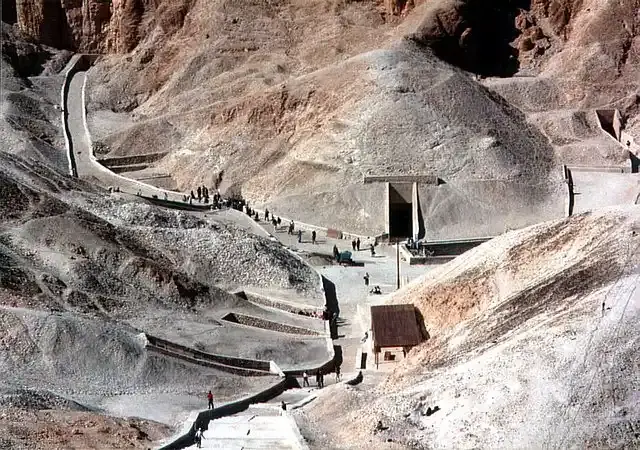
The Valley of the Kings cemetery was created at a time when Egypt was at the peak of its wealth and influence, and the tombs in the Valley of the Kings were carved deep in the rocky faces of the valley walls and consist of several chambers and corridors leading to the burial chambers. Artists and builders carved and decorated kilometers of underground passages, not only for kings but also for their wives, children and key ministers. The tombs of the Valley of the Kings were filled with unimaginable wealth, hinted at by artifacts found in the tomb of King Tutankhamun, who was a relatively small king with a relatively modest tomb. All other tombs were looted from their treasures thousands of years ago.
Valley of the Kings tombs have mostly been looted
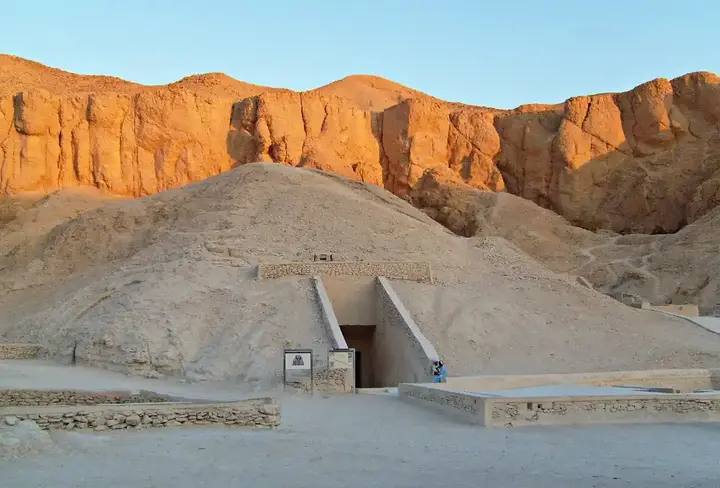
The tomb of Ramses II, considered one of Egypt's greatest pharaohs ever, contained one of the greatest collectibles and treasures, but we probably never know what those treasures were, as his tomb was looted only 150 years after his death. There are more than 60 tombs in the Valley of the Kings. Archaeologists have identified possible resting places for 41 members of the royal family in 37 tombs and some of the tombs contain more than one body, but in some cases the identity of the pharaoh buried in the tomb is unknown.
Valley of the queens next to the Valley of the Kings
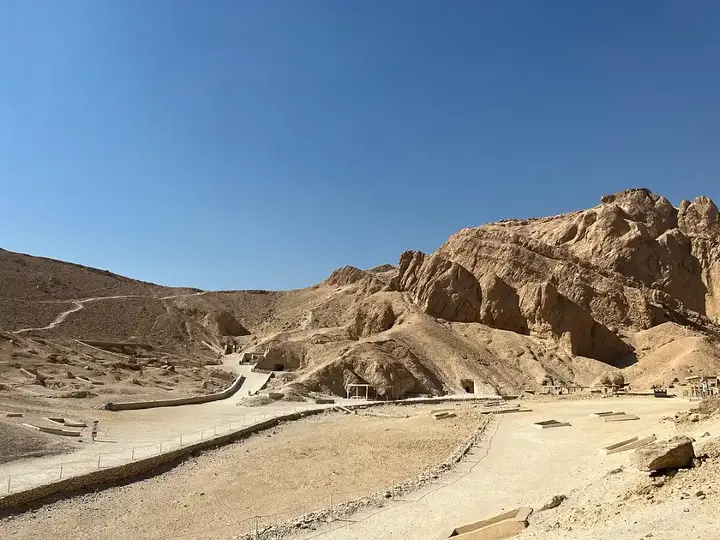
Valley of the Queens is where most of the important wives and sons of the pharaohs of the New Kingdom are buried. Its tombs resemble those in the Valley of the Kings in that they are carved into the rocky faces of the valley walls from limestone cliffs and eroded barren mountains, and consist of several chambers and corridors leading to burial chambers. Only five of the 70 cemeteries are available to visit. Valley of the Queens is closer to the ticket office than the Valley of the Kings, but still a great distance from Luxor.
What do they say about the Valley of the Kings?
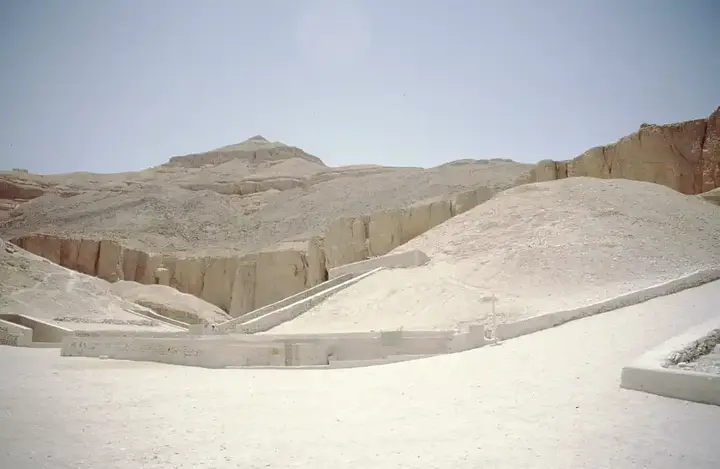
José Lull wrote in the historical magazine National Geographic that the Valley of the Kings was the burial site of many rulers of the New Egyptian Kingdom (circa 1539–1075 BC), and when Egypt rose to new heights of power and influence construction of this great desert cemetery began during the reign of Thutmose I, the third king of the Eighteenth Dynasty, whose rule marked the re-emergence of Egypt after a long period of instability. A large tomb was prepared for Thutmose, cut into the rock of the rugged desert valleys on the west bank of the Nile. The remote spot was chosen to hide the stately royal burials from cemetery raiders. The other rulers of the new kingdom placed their tombs there, and the size of the cemetery expanded to what it is.
The secret to choosing the location of the Valley of the Kings

No one knows why the Valley of the Kings was chosen as the burial place for the pharaohs of the New Kingdom, but scientists believe that the pyramidal shape of the Koum, and the mountains at the head of the valley are the reason for choosing the site for burying the kings there, besides that the Valley of the Kings is a semi-closed valley with one easy entrance to guard. It is believed that the pharaohs of the New Kingdom of Egypt believed that they would begin their journey to the afterlife in the Valley of the Kings, and despite attempts to hide the contents of the tombs using hidden passages, most of the 64 known tombs in the valley were widely looted over the centuries. But in 1922, British archaeologist Howard Carter made a stunning discovery of KV 62, later known as the Tomb of King Tutankhamun, and is one of the greatest tombs ever discovered.
Why did the kings of the pharaohs refrain from building the pyramids and chose to be buried in the Valley of the Kings?
The last known royal pyramid in Egypt under King Ahmose I (1550 to 1525 BC) was built in Abydos at the beginning of the new kingdom, after which the pharaohs were buried in the Valley of the Kings, and it is not entirely clear why the pharaohs stopped building the royal pyramids, and chose the Valley of the Kings instead, but security concerns could have been a factor, as one historical record that may carry important evidence was written by a man named "Enini", who was in charge On the construction of the tomb of Thutmose I in the Valley of the Kings: "I oversaw the digging of the tomb of His Majesty's cliff alone - no one sees, no one hears. Clearly, "this record" suggests that secrecy was a public factor in the construction of royal tombs, and the natural topography of the Valley of the Kings could explain why it emerged as a preferred site for royal tombs, as they all lie beneath a pyramid-like peak called the "century.
Valley of the Kings tombs represent the underworld of the pharaohs
The religious changes that emphasized the construction of underground tombs are another possible reason for the Egyptians to abandon the Great Pyramids., Since during the New Kingdom, the concept of the king's night journey through the underworld became very popular, and this required sophisticated plans for tombs dug into the underground foundation stone." The underground tombs dug in the Valley of the Kings fit this concept well.
From the Valley of the Kings to Deir el-Bahari. Home of the Kings of the Lost Pharaohs
Many of the great kings of the New Kingdom such as Ahmose I, who expelled the Hyksos, the Holy Queen Ahmose Nefertari, Amenhotep I, Thutmose II, Thutmose III the Great Conqueror, Seti I, Ramesses II and many other kings, were taken from their original tombs and taken to a tomb near Deir el-Bahari in present-day Luxor where their bodies settled there until the nineteenth century.
Contents of the Valley of the Kings tombs

Royal tombs in the Valley of the Kings usually contain only one ruler, but in 1881, one of the tombs of Thebes contradicted this belief, instead of containing a single royal mummy, a cache of mummies was discovered there. Among the mummies discovered, scientists identified at least 11 pharaohs from the New Kingdom period in ancient Egypt, including Seti I, whose body was missing from his magnificent tomb, and Ramses II.
Many other things were gradually added because they were considered necessary for the complete salvation of the soul of the deceased. The sarcophagus under the Old Kingdom was a four-cornered stone box with few inscriptions and little embellishment; under the Middle Kingdom it nevertheless had a gay appearance. The false doors were painted from the outside, as well as the invocation of the protector of the dead, while the inside was closely carved with religious texts. Inner sarcophagi are also similarly engraved everywhere.
Tourism in the Valley of the Kings
Visiting the Valley of the Kings in Egypt is an extraordinary opportunity to witness the splendor of ancient Egyptian civilization. The Valley of the Kings is a royal tomb that was the final resting place of many pharaohs, queens, high priests of Egypt and other members of the nobility near the ancient city of Thebes, modern Luxor, surrounded by stunning desert landscapes.
Whether you are a history buff, an avid traveler, or simply curious about the ruins of the ancient world, visiting the Valley of the Kings is truly an unforgettable experience that will leave you in awe of Egypt's rich cultural heritage. Don't forget to make the most of your trip to the famous Valley of the Kings.
![]()
Simple ways to ascertain the nature of the curved ground
You don't need fancy tools or deep science to see Earth's curve—just use your camera, observe buildings, watch ships at sea, enjoy a flight, explore space photos, witness an eclipse, or study ocean tides. These simple experiences reveal the beautiful, curved nature of our planet in creative and exciting ways. more- ADVERTISEMENT
![]()
Are electric cars actually making sales? Which countries are leading the way?
Electric vehicles are growing fast, with countries like Norway and China leading the way. Backed by government incentives and better tech, they offer lower costs and cleaner air. While challenges like high production costs remain, EVs are becoming a smart, eco-friendly choice for the future. more- ADVERTISEMENT
![]()
Marseille: the city where everyone belongs to another place
Marseille is a vibrant coastal city where cultures from around the world blend in daily life. From Arabic to French and Italian, its streets echo with languages and stories of migration, making it a unique place filled with diverse food, traditions, and peaceful coexistence among its residents. more- ADVERTISEMENT
![]()
The historic citadel of Aleppo ... One of the largest and oldest castles in the world
Aleppo Citadel, one of the world’s oldest castles, stands proudly in Syria’s ancient city. Once a temple and fortress, it saw civilizations from Greeks to Ottomans. Its restored Mamluk throne hall, with marble and basalt details, remains a key highlight, offering insight into the citadel’s rich and layered history. more- ADVERTISEMENT
![]()
What is the coldest place in the solar system?
The coldest natural spots in our solar system might be double-shaded craters at the Moon’s south pole, with temperatures around 25 K—colder than Pluto. These craters avoid all sunlight, trapping extreme cold for billions of years and possibly preserving water ice and other volatile compounds. more- ADVERTISEMENT
![]()
Neolithic revolution
The Neolithic Revolution more- ADVERTISEMENT
![]()
Valuable life skills gained from mountaineering
Mountaineering is more than climbing; it’s a journey that builds resilience, self-reliance, and teamwork. It teaches us to accept failure, embrace challenges, and grow through every step. The real reward isn’t reaching the summit, but gaining the strength and wisdom needed to navigate life itself. more- ADVERTISEMENT
![]()
A good leader knows he doesn't know everything: lessons my old sergeant didn't learn
Great leaders don’t pretend to know it all—they lead with humility, collaboration, and a willingness to learn. In today’s fast-changing world, success comes from empowering teams, embracing change, and valuing diverse perspectives, not clinging to outdated notions of authority. more- ADVERTISEMENT
![]()
Oran: a fusion of music and culture in the pearl of the Mediterranean
Oran, a stunning coastal gem on the Mediterranean, charms with its mix of history, vibrant culture, and rai music roots. From its Andalusian heritage to lively souks and beaches, the city fuses tradition with modern life, offering visitors unforgettable sights, sounds, and flavors. more- ADVERTISEMENT
![]()
Rare but deadly natural phenomena: a fascinating look at the extraordinary forces of the Earth
Nature stuns with rare spectacles like ghost apples clinging to branches, red rain falling mysteriously in India, and jellyfish lightning flashing above storms. From Venezuela’s eternal lightning storms to Australia’s rolling morning glory clouds, these phenomena showcase Earth’s strange, powerful beauty—and remind us how little we really know. more- ADVERTISEMENT












